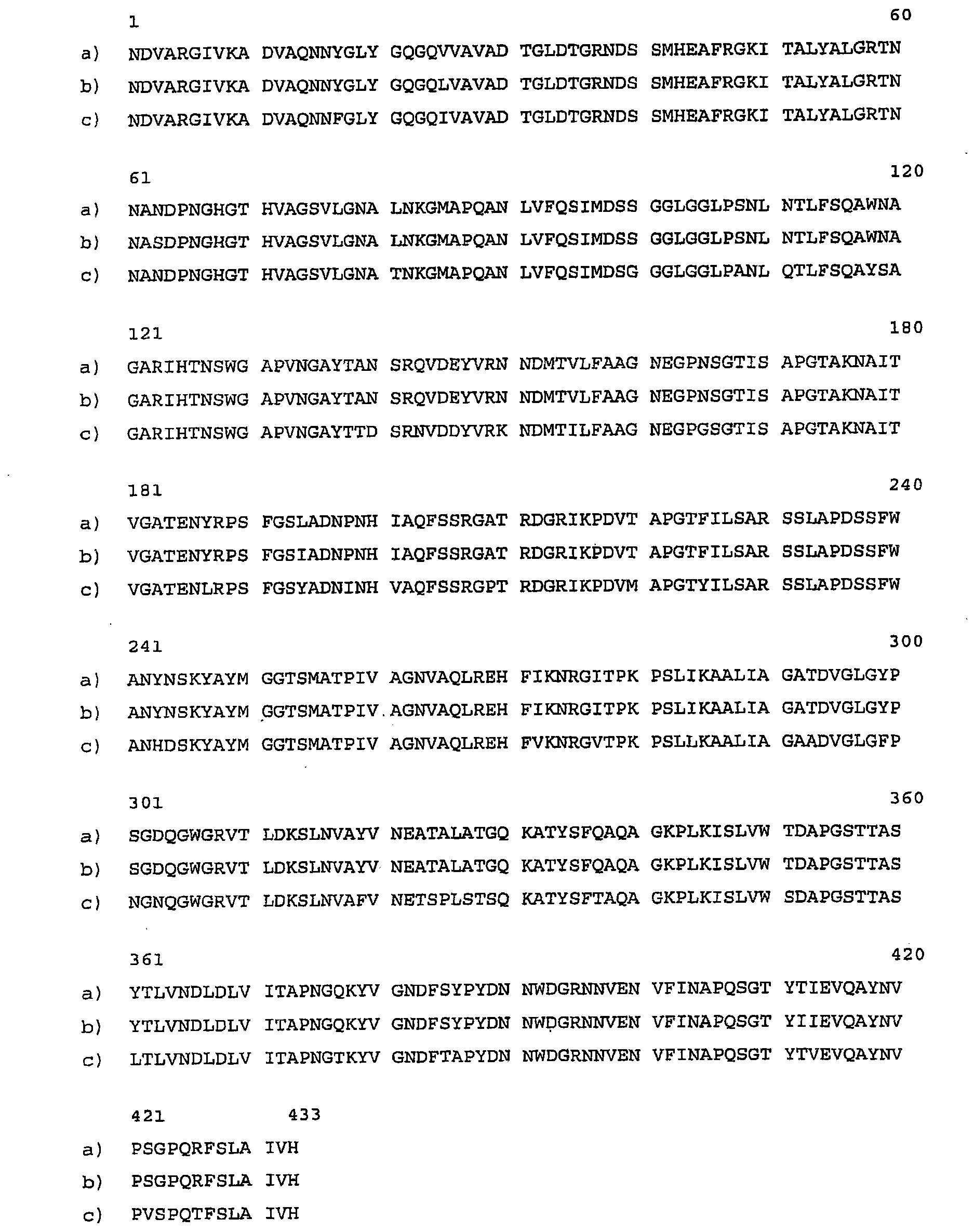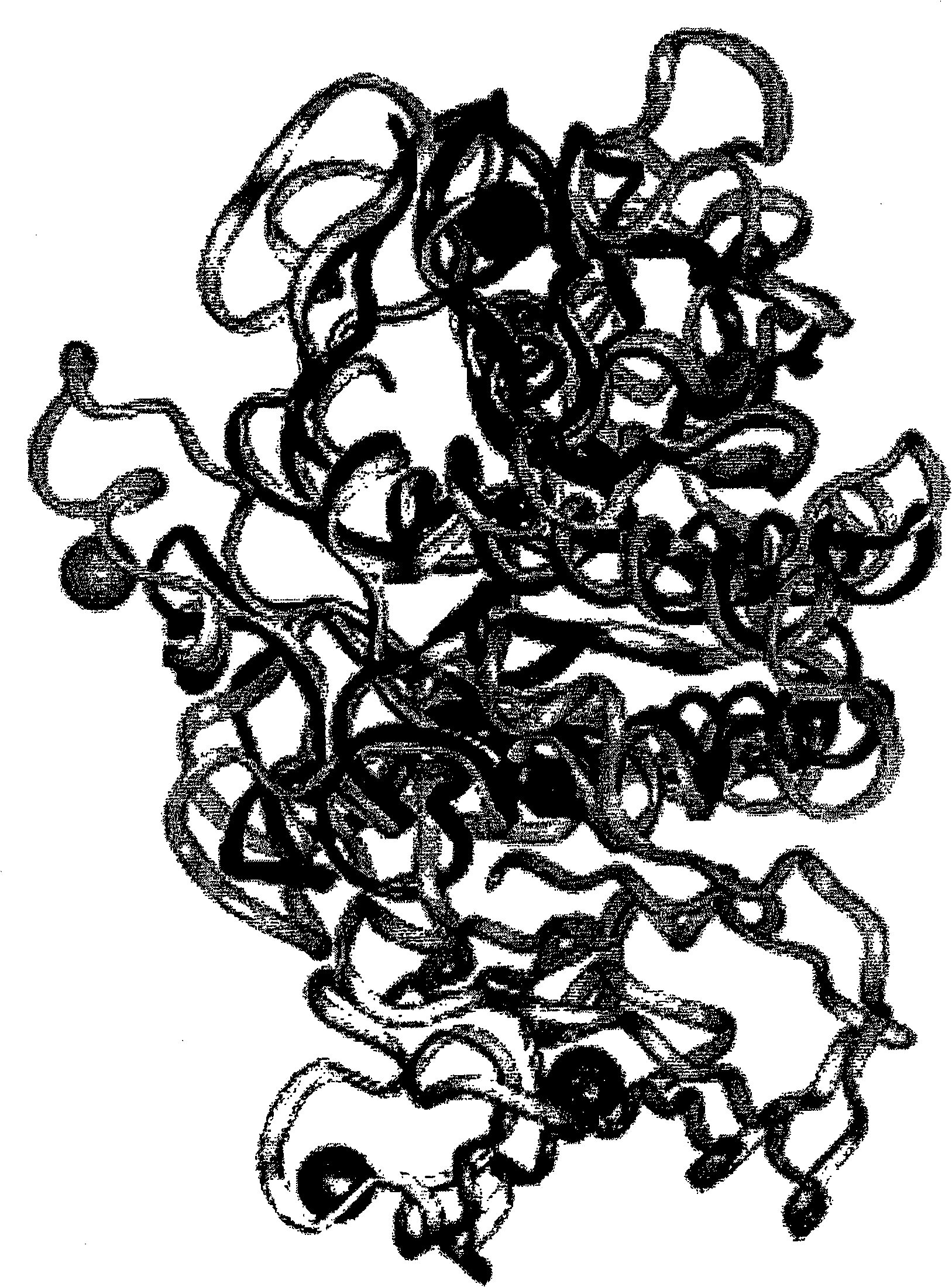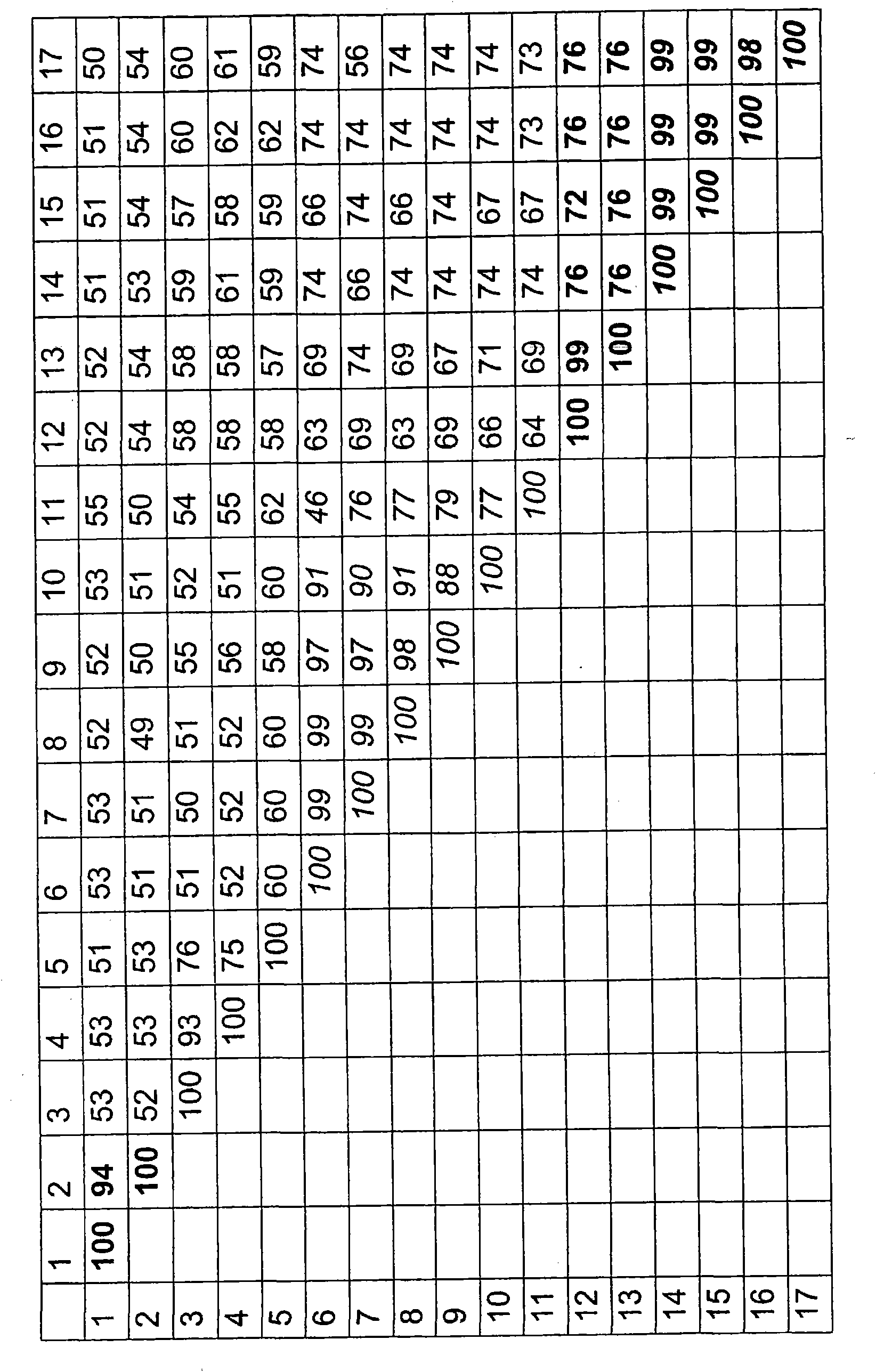Subtilases modified by modeling of protain based on JP170 structure
A technology of subtilase and JP170, which is applied in the field of modifying subtilase using protein modeling based on the three-dimensional structure of JP170, can solve the problem that the three-dimensional structure of subtilase is not disclosed.
- Summary
- Abstract
- Description
- Claims
- Application Information
AI Technical Summary
Problems solved by technology
Method used
Image
Examples
Embodiment 1
[0633] Removal of ion-binding sites in BPN'-like subtilases
[0634] The regions in JP170 and TY145 mentioned below have been selected for transfer from JP170 and TY145 into Savinse. The Savinase region (BPN' numbering) was deleted and replaced by JP170 and TY145 regions by using the molecular methods described herein for making subtilase variants. Since the Savinase region is in contact with the ion-binding site, the purpose of this modification is to remove the ion-binding site from the Savinase.
[0635] Savinase area A194-L196
[0636] JP170 Areas P209-P217 and
[0637] Savinase area L75-L82
[0638] TY145 area H83-Y92,
[0639] Or the modification can be
[0640] Savinase area A194-L196
[0641] JP170 Areas P209-P217 and
[0642] Savinase area L75-L82
[0643] JP170 Area N79-K83,
[0644] Construction and expression of enzyme variants
[0645] Site-directed mutagenesis:
[0646] JP170 subtilase site-directed variants of the invention containing specific in...
Embodiment 2
[0655] Purification and assessment of enzyme concentration
[0656] Subtilin variants were purified after fermentation using hydrophobic charge induction chromatography (HCIC) followed by vacuum filtration. To capture the enzyme, HCIC uses a cellulose substrate conjugated with 4-mercapto-ethyl-pyridine (4-MEP).
[0657] Cellulose-based beads of 80-100 μm in size were mixed with medium containing yeast extract and transformed B. Incubate at pH 9.5 in a microplate.
[0658]Since 4-MEP is hydrophobic at pH > 7, and the subtilisin variants are hydrophobic at pH 9.5, there is a hydrophobic interaction between the secreted enzyme and 4-MEP on the beads. After incubation, the medium and cell debris were removed by vacuum filtration while the beads and enzymes were on the filter.
[0659] To elute the enzyme from the beads, the pH was lowered by washing the filter with elution buffer (pH 5). The enzyme is thereby separated from the beads and can be recovered from the buffer.
[...
Embodiment 3
[0664] Automated Mechanical Stress Assay (AMSA)
[0665] Description of AMSA determination method:
[0666] To evaluate the wash performance of selected JP170 subtilase variants in detergent compositions, wash experiments were performed. The subtilases of the present application were tested using an automated mechanical stress assay (AMSA). The wash performance of a large number of small volume enzymatic detergent solutions can be examined using the AMSA assay. The AMSA plate has a number of wells for the test solutions and a lid that squeezes the fabric swatch tightly to wash in the wells. During the wash, the plate, test solution, fabric and lid are shaken vigorously to bring the test solution into contact with the fabric and apply mechanical stress in a regular periodic oscillation. For further description see WO 02 / 42740, in particular the paragraph "Embodiments of specific methods" on pages 23-24.
[0667] Experiments were performed under the experimental conditions s...
PUM
 Login to View More
Login to View More Abstract
Description
Claims
Application Information
 Login to View More
Login to View More - R&D
- Intellectual Property
- Life Sciences
- Materials
- Tech Scout
- Unparalleled Data Quality
- Higher Quality Content
- 60% Fewer Hallucinations
Browse by: Latest US Patents, China's latest patents, Technical Efficacy Thesaurus, Application Domain, Technology Topic, Popular Technical Reports.
© 2025 PatSnap. All rights reserved.Legal|Privacy policy|Modern Slavery Act Transparency Statement|Sitemap|About US| Contact US: help@patsnap.com



